CELL DANGER RESPONSE: What it is and why its important
The body’s immune system is a complicated, elegant machine that protects us from the outside world. It does this by recognizing invaders through amazing sensing mechanisms and responding to them with incredible precision. In the case of cell danger response (CDR), our cells do their best to protect themselves as they are being attacked by viruses or bacteria. Yet CDR can be dangerous if it overreacts and causes inflammation – which can lead to chronic diseases such as diabetes or even cancer. In this week’s blog post we will not only explain what CDR is but also how we minimize its risks so we may live a healthy life.
WHAT IS THE CELL DANGER RESPONSE?
How it works is by the cell senses that it is being attacked, then using specialized proteins to monitor our metabolism. When CDR is activated, the body will use available energy sources and switch its focus to self-defense rather than growth and reproduction. CDR is a mechanism that allows cells to sense ‘danger’ that may be caused by viruses or bacteria. This danger can also come in the form of molecules such as DNA, RNA, and proteins – all of which are components found inside our cells. When these substances get leaked into the extracellular environment, CDR kicks into gear.
The activated CDR will then enter into a cascade – this is where it gets its name, the danger response cascade (DRC). The danger response cascade can be broken up into five steps that occur in succession:
1. Detection: Detection of PAMPs (e.g., pathogen-associated molecular patterns like lipopolysaccharides) or damage-associated molecular patterns (DAMPs). PAMPs are substances that can be recognized by specialized receptors, such as Toll-like receptor (TLR), NOD-like receptor (NLR), and RIG-I like helicases (RLH). DAMPs refer to the cellular debris or damage that results from being attacked.
2. Activation of MAPKs, IKKɛ, TBK1, PKA, and PKR. Next these activated enzymes activate transcription factors (which refers to a biochemical process by which a particular gene’s instructions are copied into RNA) that then activate or suppress inflammation-promoting genes while suppressing other essential genes involved in repair pathways. When we discuss activated enzymes, this refers to enzymes that have been phosphorylated, which means a phosphate group has been added to the enzyme.
3. Activation of transcription factors such as NF-kB, FOXO3a, and HIF1α. These transcription factors then go on to stimulate or suppress the transcription of genes that regulate inflammation and also cell survival.
4. Activation of MDA5 & RIG-I: MDA5 and RIG-I are critical to the CDR response because they activate an antiviral pathway known as type I interferon production. Type I interferon production is a pathway that allows our body’s immune system to help fight infections.
5. Secretion of inflammatory cytokines to induce downstream immune cells to take action against the infection. Inflammatory cytokines are a group of signaling proteins that trigger inflammation at sites of infection. The cells which release these cytokines are called antigen-presenting cells (APCs) and include monocytes, macrophages, dendritic cells, and B lymphocytes. This cascade is what allows CDR to induce inflammation – yet it can have negative consequences if activated over and over again.
In addition, CDR can also occur in response to non-infectious stresses such as heat, UV irradiation, and oxidative stress. These stresses have been shown to activate IKKɛ (which is one of the last components in the cascade) and cause it to activate NF-κB (Nuclear factor-kappa B). When activated, this protein moves into the nucleus where it works with other transcription factors to promote the expression of genes that trigger inflammation. It is important to note that these events happen within minutes of your body detecting CDR triggers.
WHAT IS THE DANGER RESPONSE CAUSED IN THE BODY?
Inflammation is a vital part of the CDR cascade. It’s what helps cells fight off disease, but there are consequences if it goes on for too long or isn’t properly regulated. Left unchecked, inflammation can lead to several chronic conditions.
Inflammation has been linked to cardiovascular disease, arthritis, atherosclerosis, type 2 diabetes, Alzheimer’s disease, and even depression. One of the most well-known links between inflammation and chronic illness comes from the research of Dr. Robert Ader. In 1974 he conducted a study in which two groups were given an antitoxin to protect against poison.
Group A only received the treatment, while group B also had their spleens removed beforehand to prevent their immune systems from mounting an inflammatory response. After receiving the antitoxin both groups were then injected with the poison. However, unbeknownst to them this second injection was not actually poisonous but just saline solution therefore they should not have gotten sick.
To the surprise of the researchers, group B got just as sick as group A even though they did not have an immune system. Basically, because their bodies had already mounted an inflammatory response when injected with the saline solution it was interpreted by their brains to be a poison so they could become ill. This example is just one of many that illustrate how chronic inflammation can lead to the development of disease.
HOW CAN WE AVOID THE DANGER RESPONSE?
The answer to this question is multifactorial. First, it’s important to avoid or control infections with your immune system because that is what triggers the response in the first place.
Second, it’s also best to take care of your body. This means eating a healthy diet, exercising regularly, practicing stress management, and more.
Third, optimizing your immune system is important. The better it functions the less likely you are to succumb to disease and the more effective it will be at fighting off infections.
Fourth, protect your cells from damage and stress by limiting exposure to toxins and sources of oxidative stress such as UV radiation and environmental pollutants. This includes using antioxidants that can directly neutralize free radicals before they do damage: vitamin C, vitamin E, manganese, selenium, copper, zinc, and more.
Finally, genetic variation also determines how many times your immune system can mount a CDR response before producing dysfunctional cells. This means that although the danger responses in everyone are the same there is a big difference in their potential scope because of individual genetics. Different SNPs have also been linked to an impaired danger response.
Although the danger response is an important part of fighting infections, it can also be responsible for chronic inflammation which has been linked to many health problems. Fortunately, there are things you can do to prevent this from happening. By implementing lifestyle changes you can help your body fight off disease while simultaneously protecting your cells from damage.
How can the Institute for Human Optimization help you? At IfHO, we utilize a personalized, precision-based approach to medicine. Precision Medicine acknowledges individual differences in genes. By having a better understanding of the individual’s genes and making therapeutic decisions based on their genetics, we can work together to drive CDR in a desirable direction.
Disclaimer: The content is not intended to be a substitute for professional medical advice, diagnosis, or treatment. Additionally, the information provided in this blog, including but not limited to, text, graphics, images, and other material contained on this website, or in any linked materials, including but not limited to, text, graphics, images are not intended and should not be construed as medical advice and are for informational purposes only and should not be construed as medical advice. Always seek the advice of your physician or another qualified health provider with any questions you may have regarding a medical condition. Before taking any medications, over-the-counter drugs, supplements or herbs, consult a physician for a thorough evaluation. Always seek the advice of your physician or other qualified health care provider with any questions you may have regarding a medical condition or treatment and before undertaking a new health care regimen, and never disregard professional medical advice or delay in seeking it because of something you have read on this or any website.


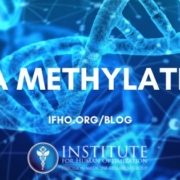 IfHO
IfHO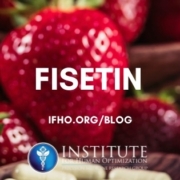
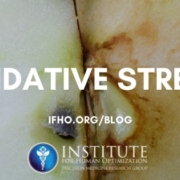

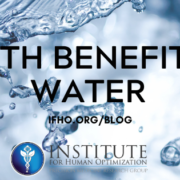
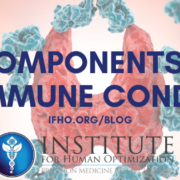
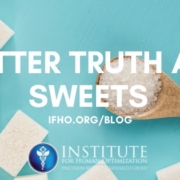
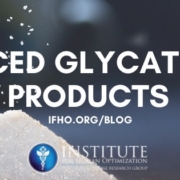



Leave a Reply
Want to join the discussion?Feel free to contribute!